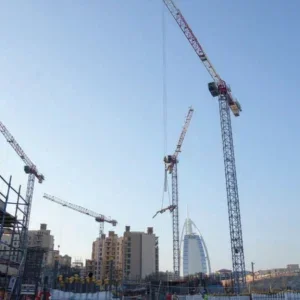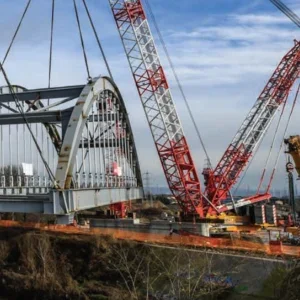At the end of its stroke the pressure of the oil within a cylinder rises to the setting of the main relief valve for that part of the system and by its nature, the re-seating of the motion control valve locks in that pressure (irrespective of any load induced pressure).
When the operator lowers the load, this stored energy gives the valve the message that a heavy load is on the cylinder; therefore it takes less pilot pressure to open. As a result, the valve opens very quickly and allows the stored energy to dissipate causing a momentary runaway condition causing a rapid acceleration of the load that is then checked by the motion control valve and brought under control. The consequence of this is an initial instability as a boom is retracted (the number of jerks will depend on the stiffness of the system at the time of lowering).
A standard overcentre valve can be described as a pilot assisted relief valve with an integral free-flow check. The difference between this valve and a pilot operated check is the manner of its opening, the overcentre valve being much more progressive.
Stacking’ or ‘sandwich’ slices are now available that enable the designer to benefit from using Integrated Hydraulics various overcentre cartridge valves in conjunction with existing sub plates, pressure, flow and directional control modules. Both single and dual slices are available in CETOP 03 and 05 sizes.
Integrated Hydraulics’ overcentre valves consist of a poppet that seals flow from an actuator, a check element, which permits free flow to the actuator, and a pilot section that opens the poppet allowing flow from the actuator at a controlled rate.

Integrated Hydraulics’ 1CEL counterbalanced overcentre valve diagram






